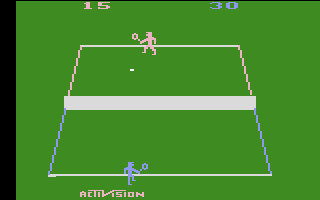

Written by a group of MIT students in 1977 and inspired by formative text game Colossal Cave Adventure, Zork built on the burgeoning dungeon exploring genre with a richer narrative and lots of humour. Zork (1977, Tim Anderson, Marc Blank, Dave Lebling, Bruce Daniels ) Its legacy includes virtual worlds such as Second Life, but also the massively multiplayer online RPG genre popularised by World of Warcraft. Programmed by Roy Trubshaw on Essex University’s DEC PDP-10 mainframe, MUD (Multi-User Dungeon) 1 took the text-based game design of Colossal Cave Adventure and Zork and added the ability to play alongside other participants via internet connection, thereby capturing the vital social element of traditional D&D. MUD men … Roy Trubshaw, foreground, and Richard Bartle. MUD 1 (1978, Roy Trubshaw, Richard Bartle ) An early entry into the survival genre, it remains one of the surprisingly few video games in which players can repeatedly die of dysentery. The classic educational game, originally coded for the HP-2100 minicomputer, The Oregon Trail challenged American schoolkids to lead a caravan of settlers from Independence, Missouri, to the Willamette Valley in Oregon, hunting and trading en route. The Oregon Trail (1971, Don Rawitsch, Bill Heinemann, and Paul Dillenberger) Among the first games to feature human v human combat, it was almost as influential as designer Tomohiro Nishikado’s later project, Space Invaders. Western Gun (1975, Taito)Īlongside Tank, Western Gun (known as Gun Fight in the US) helped lay the foundations of the multidirectional shooter genre, allowing two players to navigate a cactus-strewn landscape, blasting six-guns at each other until one cowboy fell.


Its success inspired the nascent arcade industry to experiment with elaborate novelty interfaces, a factor that proved vital in maintaining the success of the coin-op industry as home consoles proliferated. Players aim and fire at passing battleships, targeting them via a rotating periscope fixed to the front of the cab. One of the most beautiful painted cabinets of the mid-70s, Sea Wolf was inspired by Sega’s late-60s electro-mechanical game, Periscope, but added a monochrome video display instead of cardboard ships and plastic waves.
Atari video tennis movie#
It’s a formative space shooter, with the player battling two computer controlled UFOs amid a rudimentary star-scape, but it’s that curvaceous fibre glass cabinet (which earned the game a cameo in the 1973 sci-fi movie Soylent Green) that we’ll always remember. Included as much for its beautiful retro-futuristic cabinet design as the game itself, Computer Space was the first commercially available video arcade game, built by Atari founders Nolan Bushnell and Ted Dabney a year before the arrival of the much more successful Pong. Computer Space (Nutting Associates, 1971) Devised by development engineer George J Klose as a means of repurposing calculator chips, it was a big success, leading to Mattel’s legendary American football and soccer titles, and no doubt piquing the interest of a certain Nintendo engineer … 13. Widely considered the first handheld video game, Mattel Auto Race used a grid of red LEDs to simulate a simple race track, the player avoiding incoming dots to keep driving as a timer ticked down. Photograph: François Guillot/AFP/Getty Images 14.


 0 kommentar(er)
0 kommentar(er)
